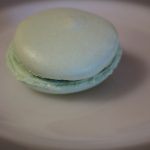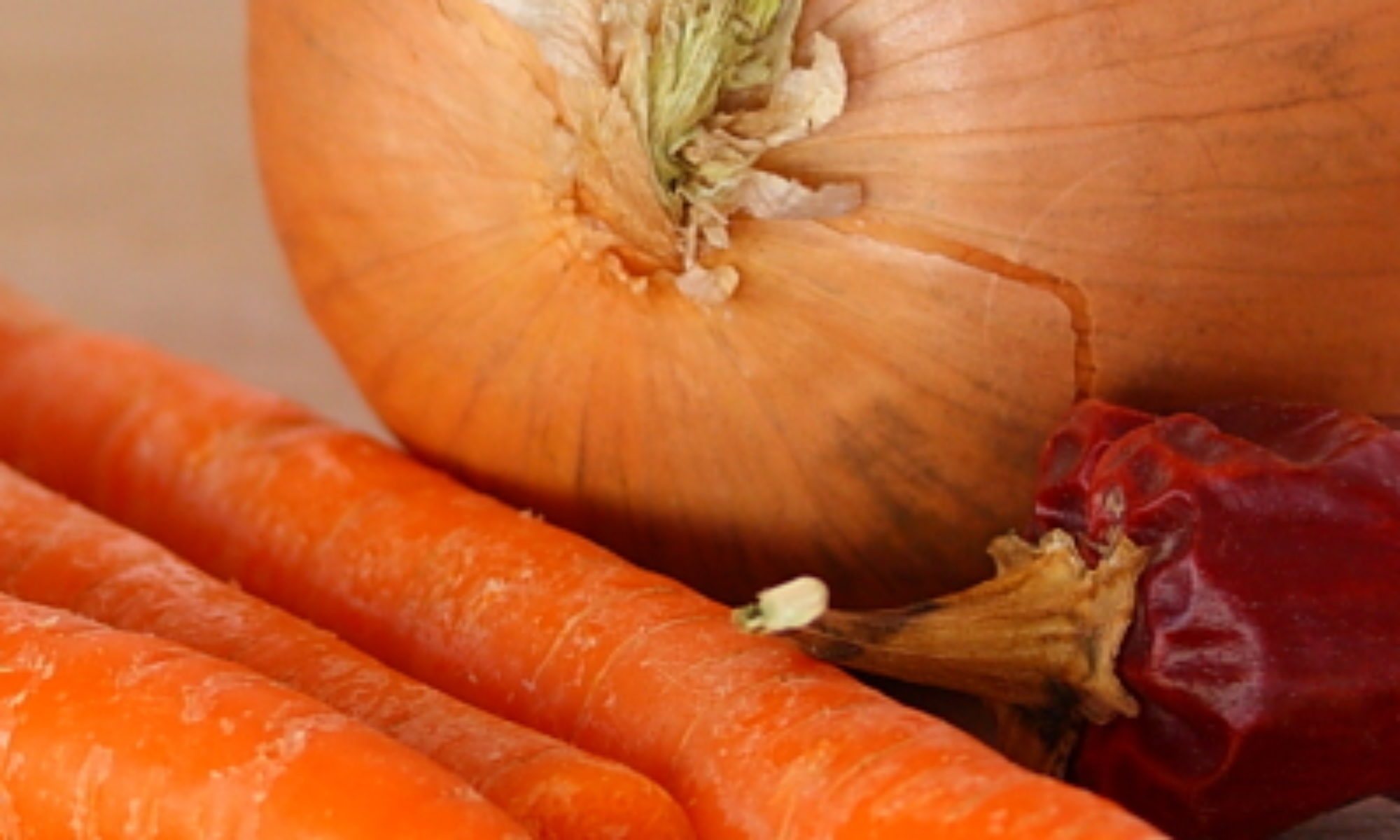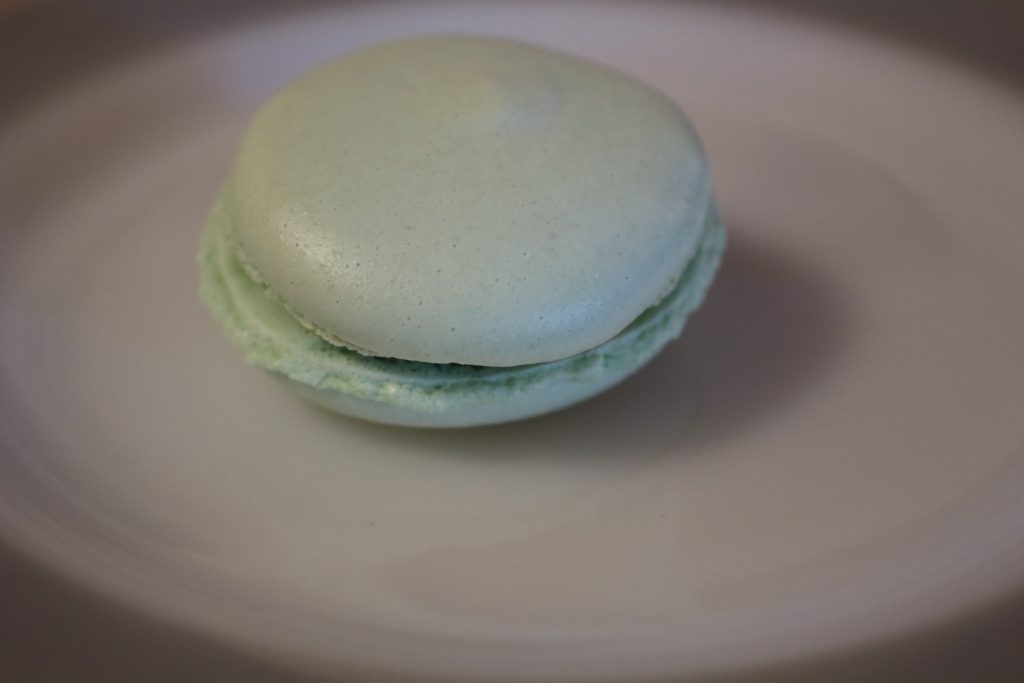
We’ve been wanting to make macarons for ages. We’ve looked at recipes. We’ve copied down some of them. We’ve read the tips for perfect macarons. We’ve had them in French bakeries. We’ve just never made them before. Why? Is it that they seem impossible to make? Nah, that won’t stop us from trying. Besides, plenty of people have made macarons. The real reason is more mundane: we’ve not had fine enough almond flour. You see, normally we make our own almond meal/flour from whole almonds by grinding them in a food processor; but, that makes a moderately coarse flour, too coarse for macarons. So, they fall by the wayside. We’ve waited long enough, so let’s make some macarons!
First, we’ll point out that we picked up a very large bag of “super-fine almond flour” from Costco (anything there that doesn’t come in super-sizes?) which truly seemed to be super-fine. And, second, although we looked at a lot of macaron recipes, we decided our first foray into macaron baking would use the recipe from Bouchon Bakery, by Thomas Keller and Sebastian Rouxel, although we did use vanilla extract in place of a vanilla bean. Also, note that we won’t give you recipes for an appropriate filling for these cookies. We had some leftover Swiss Meringue Buttercream and some Cherry Lambic Jam for ours; you can use whatever you’d like for your cookies.
We will point out that you’ll need a candy thermometer, baking parchment, and a piping bag to make these, so consider yourself forewarned. Also, we correct the tiniest typographical error in this recipe; it wasn’t critical, but it could leave you frustrated with the recipe as is.
Vanilla Macarons
Ingredients
- 212 g almond flour (1 3/4 cup + 2 1/2 Tbs)
- 212 g confectioners' sugar (1 3/4 cup + 5 tsp)
- 82 g egg whites (1/4 cup + 1 1/2 Tbs)
- 10 g vanilla extract (2 tsp)
- 90 g egg whites (1/4 cup + 2 Tbs)
- 236 g granulated sugar (1 cup + 3 Tbs)
- 158 g water (2/3 cup)
Instructions
- Cut a piece of parchment to fit your baking sheet, and, using a 1 1/2 inch round cookie cutter as a guide, draw a template for piping cookies, leaving an inch of space between each circle.
- Sift almond flour and powdered sugar into a large bowl, and whisk together.
- Add 82 grams egg whites and stir until a paste forms. Stir in vanilla extract.
- Preheat oven to 350°F. Move a rack to the center of the oven.
- Combine sugar and water in a saucepan over medium-high heat. Stir until sugar dissolves, then heat to 230°F.
- Place 90 grams egg whites in the bowl of a stand mixer and whip on medium until soft peaks form. If sugar syrup isn't ready, turn mixer to low to keep the egg whites moving.
- Continue to cook sugar syrup to 248°F, then remove from heat. Return mixer to medium and slowly pour syrup between the edge of the bowl and the whisk attachment. Once syrup has been added, increase speed to medium-high and whip until meringue is cool, about 5 minutes.
- Fold 1/3 of the meringue into the almond mixture. Continue folding in meringue a bit at a time until batter flows slowly. Transfer to a piping bag.
- Place your parchment template on a baking sheet and another piece of parchment on top. Use the guide to pipe cookies, then slide out the template. Lightly wet your finger and press down any tails that stand up on the cookies. Bang the sheet on the counter once or twice to smooth out the cookies.
- Bake for 11 minutes, or until tops look dry. Let cool completely on baking sheet.
- Turn over a cookie at a time and spread with your choice of filling, placing another cookie on top to make a sandwich.
- For best flavor, freeze cookies for 24 hours, then thaw in the refrigerator for 3 hours before serving at room temperature.
Ingredient discussion:
Notice that all measurements are listed in grams first. You should use these measurements if you can, as your cookies will be consistent from batch to batch. If you can, get almond flour that is ground super-fine. If you can’t, that’s okay, too; just grind the almond flour in a food processor until very fine and sift. Egg whites: they’re listed twice because you use them at different times, and, if you’re used to using egg whites by counting, remember that large eggs (in the US) have about 30g of whites per egg, so the 82 g is three large egg whites minus about 2 teaspoons. The 90 g of egg whites should be about 3 egg whites. And, if possible, the eggs should be from healthy happy hens that are allowed to forage — check your farmers’ markets.
Procedure in detail:
If this is your first time making macarons, we recommend that you set aside an afternoon for it (we did). It won’t take that long, but you need to take care when making them. Even so, don’t expect perfection in form (ours weren’t), but they’ll taste great anyway, and, over time, you’ll improve your technique.

Make template. You may say this isn’t really important, but it is. So, take the time to cut a piece of parchment that will fit on your baking sheets and draw evenly spaced circles on it. The simplest way is to find a cookie cutter about 1 1/2 inches in diameter and place it on a piece of parchment. Draw a circle with a fine lined magic marker using that as a guide. Continue drawing, spacing the circles about an inch apart. You’ll probably get a different number of circles on your template; we got 24 to fit. To use the template, place it under another piece of parchment cut to fit before piping the cookie batter, then remove before baking.

Sift almond flour. Yes, we find it a bit troublesome to sift, but, for some things, we do it anyway. Such as macarons. We used our finest mesh sifter so we’d have the finest almond flour for these cookies, and you should consider doing so, too. If you’re weighing your ingredients, as we did, weigh the bowl, then figure out how much the bowl would weigh with the almond flour in it. Start sifting, and weigh the bowl occasionally as you sift almond flour into it. When it gets to the target weight, you’re done.
Sift confectioners’ sugar. Follow the technique you used for the almond flour to sift and measure the confectioners’ sugar. Once you have the two sifted, whisk the two ingredients together. Don’t worry, you’re now finished sifting.
Stir in egg whites. Make a well in the almond flour and sugar mixture and add the 82 grams of egg whites. We placed our bowl of ingredients on the scale and poured in egg whites until we’d added the correct amount, then stirred everything together using a spatula. The mixture will be quite thick, almost as thick as marzipan paste, and it may seem too thick, but it works.
Add vanilla. Add the vanilla and use the spatula to stir it into the almond sugar paste, and set it aside for now.
Preheat oven to 350°F. Place one of the racks closest to the center of the oven. Prep one of your baking sheets by placing your cookie template under a piece of parchment. You should see the circles through the top layer of parchment well enough to use as a guide.

Cook sugar and water. Combine the sugar and water together in a small saucepan and place over medium-high heat. Stir and bring to a boil, dissolving the sugar. Insert a candy thermometer and cook without stirring until the mixture reaches 230°F (Note: in the Bouchon Bakery they list 203°F, but this is a typo; if you use the incorrect number, your egg whites will finish whipping way too early). Continue to let the mixture cook while you whip the egg whites, but check the temperature of the mixture from time to time, as you want it to reach 248°F, but not any higher. Ideally, you’ll have the syrup at 248°F at the same time the egg whites finished whipping, but, most likely, the whites will be whipped before the syrup is ready. If the syrup finishes first, lower the heat as much as possible, trying to maintain 248°F.
Whip egg whites. Place the 90 grams of egg whites in the bowl of a stand mixer fitted with the whisk attachment. Beat on medium until the whites for soft but shiny peaks. If the syrup is not yet hot enough, turn the mixer to low just to keep the egg whites moving.

Make Italian meringue. Return the mixer to medium speed and slowly pour the hot syrup in between the side of the bowl and the beater so as not to spatter hot syrup everywhere. The meringue might deflate, but don’t worry. Once the syrup has been added, let the mixer run on medium-high speed until the meringue has cooled to room temperature and is nice and light and fluffy, about 5 minutes.

Fold (and add color). Fold 1/3 of the meringue into the almond mixture, and, if you want to add color to your cookies, do so now. We wanted a light green color cookie to celebrate spring so we added a few drops of green food coloring. Continue folding in the meringue bit by bit until the mixture is soft enough that it very slowly flows together when you fold. You may not use all the meringue, but we did. Err on having a too stiff batter, rather than one that’s too loose.

Pipe cookies. Transfer the batter to a piping bag fitted with a 1/2 inch smooth tip, and, holding the bag upright, pipe batter using the template as a guide. Once the baking sheet is filled, slide the template out from underneath. Wet the tip of your finger (we did this partway through) and lightly press down any tails that formed when you pulled away the piping bag. Rap the baking sheet on the counter to smooth out the surface of the cookies as best you can.

Bake. Slide into the oven and bake for about 11 minutes, or until the cookies are no longer sticky to the touch. Try to minimize opening the oven while the cookies bake.

Cool. Place the baking sheet on a rack and let cool completely. Meanwhile, continue piping and baking cookies. Once cool, you can lift the parchment off the baking sheet for another round of baking.

Fill. Turn over half of the cookies — they should just lift off the parchment — and pipe or place your filling on the bottom, setting another cookie on top. We piped some of ours with a circle of Swiss meringue frosting, placing a dollop of cherry jam in the middle. When we ran out of frosting (it was a leftover) we just used a bit more cherry jam.
Freeze. For best flavor, place your cookies in airtight containers with layers of bubble wrap between and freeze for about 24 hours. Thaw for three hours in the refrigerator and serve at room temperature. If you can’t wait that long, by all means, have at ’em now; we won’t stop you.
There you have it, the full recipe for making macarons. Yes, it seems like a lot, but look at the recipe. At its simplest, you stir together some dry ingredients with a bit of egg whites and flavor, then you make a cooked meringue and fold that in. Finally, you pipe and bake, then fill some cookies. Nothing that’s beyond your ability. So, how do they taste? These are really tasty cookies, crisp crackly shells, chewy insides, a sweet filling between and well worth making. However, they are more trouble than most cookies, so we have to rate them a four on our famous “worth it” scale.




